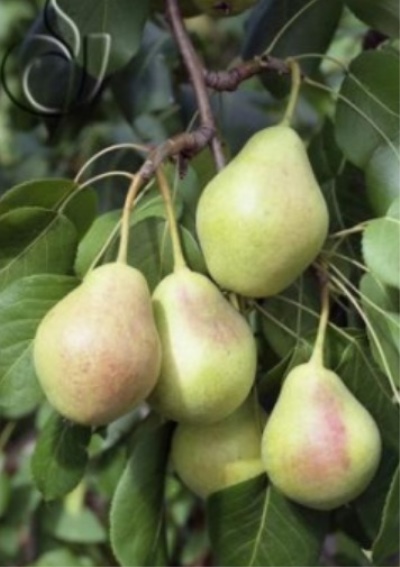
- Authors: Puchkin I.A., Kalinina I.P., Borisenko M.I., Karataeva E.P. (FGBNU Federal Altai Scientific Center of Agrobiotechnology)
- Appeared when crossing: Wine x Favorite Yakovleva
- Year of approval: 1998
- Fruit weight, g: 70-100
- Ripening terms: summer
- Fruit picking time: from the end of the second decade of August
- Appointment: universal
- Growth type: medium-sized
- Yield: high
- Transportability: bad
Attempts to grow large sweet pears in the Siberian climate, as in the south, have been made for a long time. But they all crashed mercilessly on the cold winters. However, at the turn of the millennium, varieties approved by the State Register and approved for use in territories with difficult climatic conditions began to appear. One of these varieties is the Lel pear.
Breeding history
The breeding was carried out by a group of employees from the Federal Altai Scientific Center of Agrobiotechnology. Pear registered and approved for use in 1998.
In this institute, work on the crossing of frost-resistant pears with sweet varieties has been carried out since 1969. Today, as a result of this work, there are a number of varieties adapted to the harsh winter with tasty fruits, different in terms of ripening and consumption.
Description of the variety
Lel is a compact pear variety. The shoots of a mature tree stretch upward; the crown resembles an elongated oval in shape. Leaves are small, dark green in color. The tree does not overgrow much, so you can easily get to the fruit or cut off an unnecessary branch.
Fruit characteristics
Fruits of pears are medium-sized, no more than 70-100 g. They are covered with a smooth skin with a large number of small subcutaneous points. In the process of ripening, the color changes slightly, ripening, the fruits turn yellow a little, on some red fragments appear.
Taste qualities
The pear tastes sweet and sour with a spicy aftertaste. The pulp is light, tender. Suitable not only for fresh consumption, but also for the preparation of sweet dishes and canning. The fruits make excellent jams, compotes and juices.
Ripening and fruiting
The tree begins to actively bear fruit only 4 years after planting. The variety is designed to fully ripen by the end of summer. Harvesting time - the last days of August, early September. The advantage is the fact that even whole poured fruits do not fall off on their own. However, ripe pears are not stored for a long time, they can lose their appearance in a week, and besides, they do not tolerate transportation well.

Yield
Lel bears fruit stably and regularly, regardless of the weather characteristics of a particular year. The average yield confirmed by gardeners of the Altai Territory is 26 kg per tree.
Self-fertility and the need for pollinators
This variety is self-fertile and does not require additional pollination measures. However, it has been noticed that in the presence of several other varieties in the immediate vicinity, the level of self-fertility activity is greatly increased. Although here you need to take into account the flowering period of different trees.
Landing
The planting process is no different from other fruit trees.A small hole (about 70 cm in diameter) needs to be enriched with fertilizers, and a seedling should be placed in it. Then lightly sprinkle with fertile soil and compact, add water. It is highly recommended to build additional support for a while until the plant takes root well.


Growing and care
The Lel variety is unpretentious in maintenance, does not require special pruning, active fertilization or professional mulching. The only thing that's critical is watering. The pear needs to be watered quite actively, at least 2 times a week. It is advisable not with well water, so that there is no hypothermia of the root system. In this case, it is necessary to take into account such a nuance that frequent watering compacts the soil, therefore, at least a couple of times per season it is necessary to loosen the soil around the trunk.



Disease and pest resistance
The variety has a recognized resistance to many common garden diseases. However, in practice, there are cases of damage to fungal and immune diseases. For protection, it is recommended to constantly engage in prevention: spray with special preparations and solutions.

Like any other fruit trees, the pear needs protection from various diseases and pests. When planting a pear on your site, you need to know in advance what diseases you should beware of. To successfully carry out the struggle, it is necessary first to correctly identify the cause of the problem. It is important to distinguish signs of disease from manifestations of the presence of insects, mites, caterpillars and other types of pests.
Review overview
The variety is characterized by mostly positive reviews. Among the positive qualities are: ease of care, pleasant taste, late flowering and resistance to harsh climates. Lel also pleases with good and stable yield. I do not like the short shelf life of the pear and the unsuitability for transportation when ripe. Everything you need for optimal tree development: sunlight, protection from strong winds and regular watering in hot weather.





































































